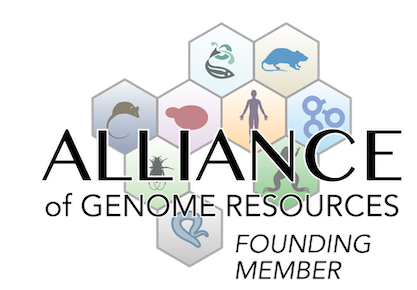mortality/aging
|
• mice show compromised survival with only about 60% of mice surviving after birth
|
cardiovascular system
|
• mice show elevated proteoglycan staining in the myocardium and chondroid metaplasia, along with patchy mild interstitial fibrosis within the myocardiaum
|
|
• some mice with cardiac fibrosis have histologic evidence of small areas with chondroid metaplasia localized mainly in the atrium and the aortic valve
|
|
• hearts show hypertrophic cardiomyopathy along with myocyte hypertrophy of varying severity
|
|
• some mice with cardiac fibrosis have histologic evidence of small areas with obvious chondroid metaplasia localized mainly in the aortic valve and the atrium
|
|
• patchy mild interstitial cardiac fibrosis is seen in the most severely affected mice
|
|
• echocardiograms show reduced ejection fraction, stroke volume, cardiac output, and fractional shortening, increased left ventricular end-systolic internal diameter (LVID) and increased end-systolic volume (ESV) indicating systolic dysfunction indicative of inadequate ejection of blood from the heart chambers following each systolic contraction
• systolic dysfunction is progressive as LVID and ESV are increased at 20 weeks compared to12 weeks
• the ratio of peak mitral inflow velocity during early diastole and mitral annular velocity is altered, indicating increased ventricular filling pressure
• increase in the left-ventricular end-systolic anterior wall thickness at 12 weeks of age
• mice show a large variability of aortic valve peak pressure and aortic ejection time
• however, parameters of diastolic dysfunction, such as isovolumic relaxation time and mitral ratio of the early to late ventricular filling velocities, are not altered
|
|
• hearts show hypertrophic cardiomyopathy along with myocyte hypertrophy of varying severity
• MRI shows that hearts are unable to pump all the blood and end-systolic images show that end-systolic ventricles are still full of blood
|
cellular
|
• patchy mild interstitial cardiac fibrosis is seen in the most severely affected mice
|
craniofacial
|
• cranium is more rounded
|
short snout
(
J:345629
)
growth/size/body
|
• hearts show hypertrophic cardiomyopathy along with myocyte hypertrophy of varying severity
|
short snout
(
J:345629
)
|
• mice show reduced weight gain starting from 3-4 weeks of age
|
immune system
|
• evidence of microscopic post-obstructive pneumonia is seen, characterized by accumulation of foamy macrophages within alveolar airspaces, in the most affected mice
|
limbs/digits/tail
|
• proximal phalanges of second, third, and fourth digits from front paws are shorter
|
short femur
(
J:345629
)
|
• femur length is shortened, but no difference is seen in width or cortical thickness
|
muscle
|
• mice show elevated proteoglycan staining in the myocardium and chondroid metaplasia, along with patchy mild interstitial fibrosis within the myocardiaum
|
|
• some mice with cardiac fibrosis have histologic evidence of small areas with chondroid metaplasia localized mainly in the atrium and the aortic valve
|
|
• hearts show hypertrophic cardiomyopathy along with myocyte hypertrophy of varying severity
• MRI shows that hearts are unable to pump all the blood and end-systolic images show that end-systolic ventricles are still full of blood
|
respiratory system
|
• evidence of microscopic post-obstructive pneumonia is seen, characterized by accumulation of foamy macrophages within alveolar airspaces, in the most affected mice
|
|
• MRI shows bilateral ground glass opacification with multifocal areas of poorly defined consolidation in the lungs of the most severe cases
• however, no significant pulmonary fibrosis is seen
|
|
• whole-body plethysmography at 12 weeks and 20 weeks of age indicates respiratory dysfunction in the expiration phase in some mice
• severity of respiratory insufficiency varies
• males exhibit a more severe respiratory dysfunction than females
• no significant progression of respiratory dysfunction is seen between 12 and 20 weeks
• mice show a less severe respiratory dysfunction than homozygous Adamts12tm2Mtek mice
|
|
• indicators of the expiration phase, including pause (Penh), pause index, and the peak expiratory flow/peak inspiratory flow ratio, are affected
• however, the inspiration phase and other parameters of respiration, including respiratory rate and tidal volume, are not altered
|
skeleton
|
• cranium is more rounded
|
|
• proximal phalanges of second, third, and fourth digits from front paws are shorter
|
short femur
(
J:345629
)
|
• femur length is shortened, but no difference is seen in width or cortical thickness
|
Mouse Models of Human Disease |
DO ID | OMIM ID(s) | Ref(s) | |
| geleophysic dysplasia 1 | DOID:0111725 |
OMIM:231050 |
J:345629 | |



 Analysis Tools
Analysis Tools